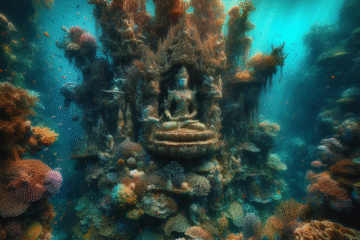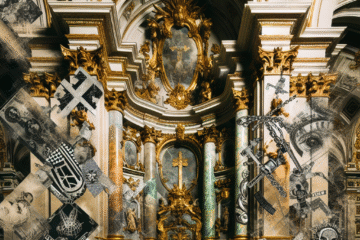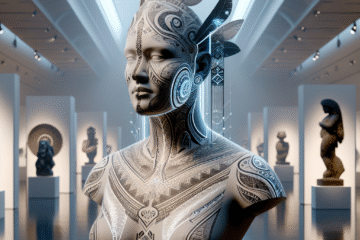Introduction: The Surrealist Threshold
From melting clocks to dreamscapes of impossible geometries, surrealism has long invited viewers to suspend the logic of the waking world in favor of the unconscious and fantastical. Now, as artificial intelligence generates strikingly bizarre images at the click of a button, the question arises: can machines truly produce surrealist art in the spirit of Salvador Dalí, Max Ernst, or Leonora Carrington? Or are they merely adept mimicry engines, stitching together fragments of visual entropy without truly dreaming?
To approach this question, we must walk backward through art history—starting with AI’s current capabilities and tracing the lineage of surrealist methods such as automatism, collage, and exquisite corpse. Along the way, cultural, philosophical, and technological shifts shed light on whether the strange outputs of machine learning algorithms herald a new era in surrealism—or simply replay old techniques with colder hands.
Chapter 1: The Mechanical Muse—AI’s Foray Into the Subconscious
Today’s AI art generators like DALL·E, Midjourney, and Stable Diffusion can evoke surrealism with astonishing fluency. Type in “a floating elephant under a bleeding moon, in the style of Dali,” and the result might feign eerie authenticity. These tools rely on vast datasets of images and text, guided by user prompts and complex statistical models to generate imagery that feels uncannily strange.
Yet, while the aesthetic output appears surreal, AI’s dream logic is data-driven, not sourced from an unconscious or irrational space. The machine neither dreams nor desires; its strange juxtapositions are computational, not psychological. This raises the philosophical query: is surrealism rooted in technique or intention? AI mimics madness—but does it know it’s mad?
Chapter 2: Automatism and the Authority of the Unconscious
The Surrealists of the 1920s, inspired by Freudian psychoanalysis, sought to tap into the unconscious through automatic writing and drawing—an attempt to bypass rationality and give form to internal obsessions. André Breton declared automatism the core method of surrealism, producing works like Joan Miró’s shimmering dreamscapes or André Masson’s frenzied ink drawings.
Automatism was both an aesthetic and political rebellion: a rejection of Enlightenment rationalism in favor of the chaotic, primal self. Importantly, artists embraced risk, failure, and personal revelation. In contrast, AI operates under optimization. It avoids chaos to maximize coherence according to statistical likelihood. While both use algorithms of a sort, the Surrealists’ were psychological, AI’s are mathematical. The muse may be mechanical now—but can she exude the vulnerability of automatism?
Chapter 3: Collage and Computational Collisions
Collage, another hallmark of surrealism, was rooted in disruption. Max Ernst’s use of Victorian engravings repurposed in chaotic compositions birthed entirely new, jarring narratives. Photomontage likewise juxtaposed incongruous elements, playing heavily on fragmentation—a physical manifestation of the fractured psyche.
AI operates similarly in its training phase, gleaning shards of images from across the internet and reconstructing them into novel but recognizable pastiches. In this way, AI can be viewed as a digital cousin of collage—its layers are virtual, but still draw from the detritus of human vision. Yet here, authorship is obfuscated: who is the true creator—the prompter, the programmer, or the machine?
Chapter 4: Surrealism in the Digital Era—From Cybernetics to Code
By the late 20th century, surrealism had taken a cybernetic turn. Artists like Eduardo Kac and Stelarc began fusing biological bodies with technology, echoing the surrealist embrace of transformation and the grotesque. Computers entered the creative process, not just as tools for execution but as collaborators. With the rise of generative adversarial networks (GANs), creativity became a recursive feedback loop between human input and machine generation.
This interplay echoes the Surrealists’ “exquisite corpse” games, where multiple players contributed to a piece without seeing its entirety. In today’s algorithmic approach, the AI “collaborates” blindly with the user, iterating on prompts, producing unexpected combinations. Yet unlike the surrealist collective, AI lacks intention. There is no true irrational core—only the mimicry of one via statistical patterns. Still, the surreal emerges, re-filtered through silicon logic.
Chapter 5: Can the Algorithm Dream?—Philosophy and the Future of Surrealism
Philosophically, surrealism championed the irrational not just as aesthetic, but as subversion. It challenged the socio-political status quo, flirted with Marxism and anarchism, and sought metaphysical liberation. Can AI art, often built on datasets embedded with capitalist and colonial histories, uphold surrealism’s revolutionary edge?
Despite this, AI-generated surrealism could provoke new dialogues. As machines reflect human data back at us in alien ways, they might externalize our collective subconscious—crowdsourced imagination made manifest. Rather than individual psyche, we now have the networked dream: a digital surrealism emerging not from poets’ dreams, but from predictive models of culture’s remnants.
Yet perhaps the most surreal idea of all is this: in designing machines to dream, we uncover how mechanized our own dreams have become. Has surrealism found a new algorithmic muse—or has it become too calculable to be truly uncanny?

Image description:
Surrealism 2022 Death Valley by David S. Soriano.
License:
CC BY-SA 4.0
Source:
Wikimedia Commons


